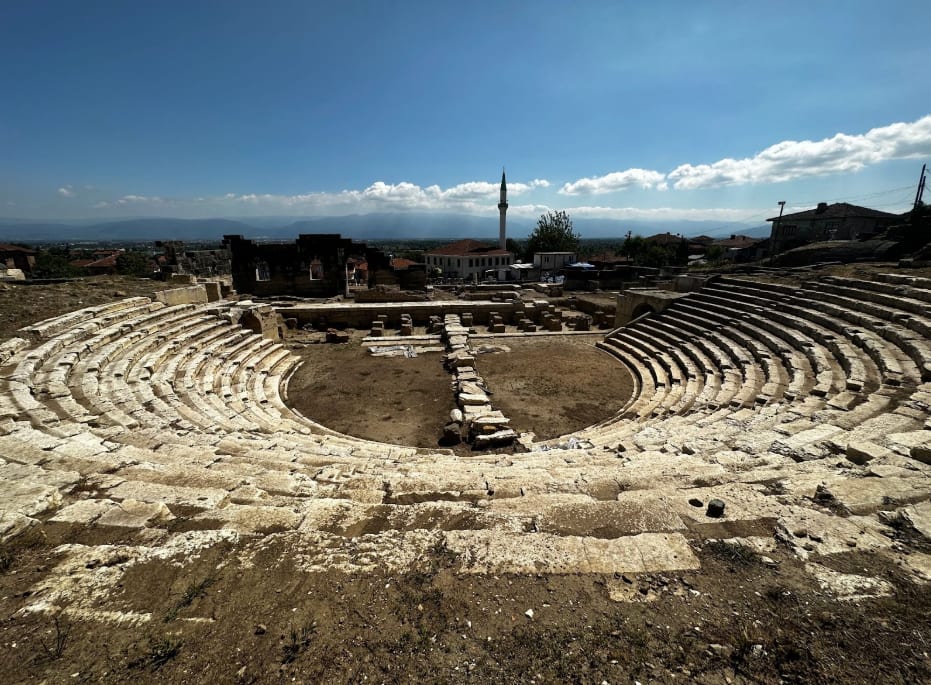Early Byzantine Chapel Unearthed at Konuralp Theatre Site

Unearthing the Past: New Discoveries at Konuralp Ancient Theatre
Recent excavations at the Konuralp Ancient Theatre in Düzce's Konuralp region, Turkey, have revealed the remains of a chapel and signs of a larger complex structure that is believed to date back to the early Byzantine period. These findings offer new insights into the historical shift towards Christianity in the region, highlighting its significance during this transformative era.
The Konuralp Ancient Theatre, known in antiquity as Prusias ad Hypium, holds a unique place as the only ancient theatre in the Western Black Sea region. Over time, the site has been the focus of extensive archaeological work, with structures from the Byzantine, Roman, and Ottoman empires being uncovered. This ongoing research continues to reveal layers of history embedded within the landscape.
Raşit Aydın, the Head of Guidance Services and an art historian at the Konuralp Ancient Theatre, shared his observations on the recent discoveries. He mentioned that the team identified an apse facing east, which they believe is part of a chapel. As they explored further towards the south, another structure resembling an apse emerged. The presence of small mosaic pieces and floor tiles nearby suggests that the site may be part of a larger complex. While a full assessment is still pending, these findings point to a significant religious or social structure.
The discovery of the additional apse-like structure indicates that the site could be part of a broader religious or social complex, rather than just a small place of worship. Archaeologists found small mosaic pieces and floor tiles in the vicinity, reinforcing the idea that the site held considerable historical importance. The continued excavations have led to the uncovering of a larger structure, with experts suggesting it could have been a church or a special venue for the elite class during the early Byzantine period.
Aydın explained that the small structure they believe to be a chapel is likely from the early Byzantine period. He noted that the quality of materials and wall bonding techniques support this conclusion. Additionally, he stated that the continuation of the structure is most likely from either the early or middle Byzantine period.
The Konuralp Ancient Theatre site has yielded a wealth of historical artifacts and structures, gradually revealing traces of the past. Excavations are being conducted in collaboration with Düzce Municipality and Düzce University, with the aim of uncovering and preserving the region’s rich cultural heritage.
Prusias ad Hypium, one of the 12 cities that formed the Bithynia Union, is estimated to have been built in the 3rd century BCE. The theatre itself stands as a testament to the architectural achievements of that era and has long been a focal point for historians and archaeologists.
Aydın highlighted the progress made in the excavations, noting that 95% of the theatre is now completed. The team is currently focusing on the surrounding structures. The discovery of the chapel and the complex structure represents a major breakthrough in understanding the site’s historical significance.
In the southern part of the chapel, a new apse was uncovered during the excavations, suggesting that the structure may be part of a larger complex. Initially, an east-facing apse was found, followed by another structure resembling an apse that extended towards the south. This expansion indicates that the site is not just a simple chapel but part of a more intricate set of buildings. The team also discovered a mosaic area, which underscores the site’s important functions.
These findings continue to reshape our understanding of the region’s history and its role during the early Byzantine period. Ongoing research and excavation efforts promise to reveal even more about this ancient site and its connection to the broader historical narrative.
Post a Comment for "Early Byzantine Chapel Unearthed at Konuralp Theatre Site"
Post a Comment